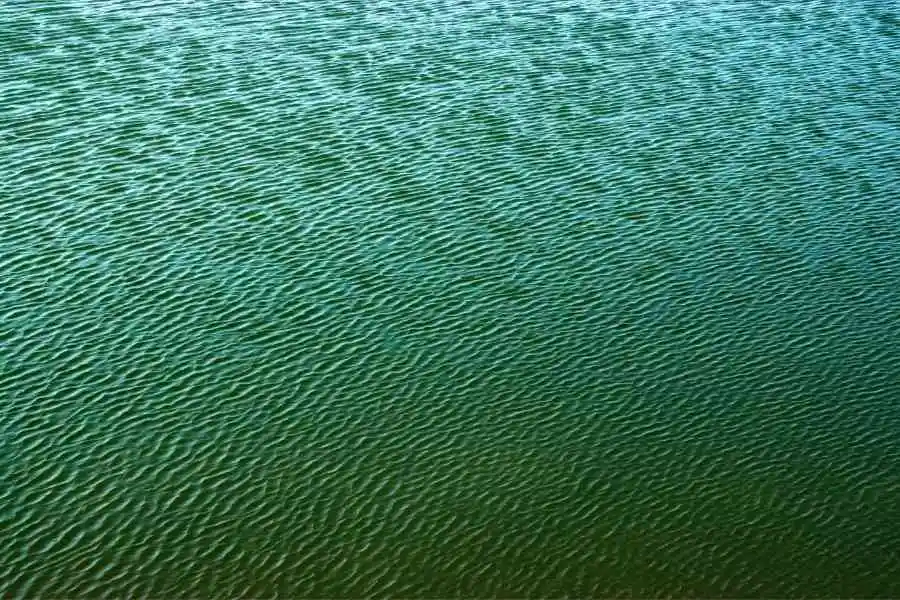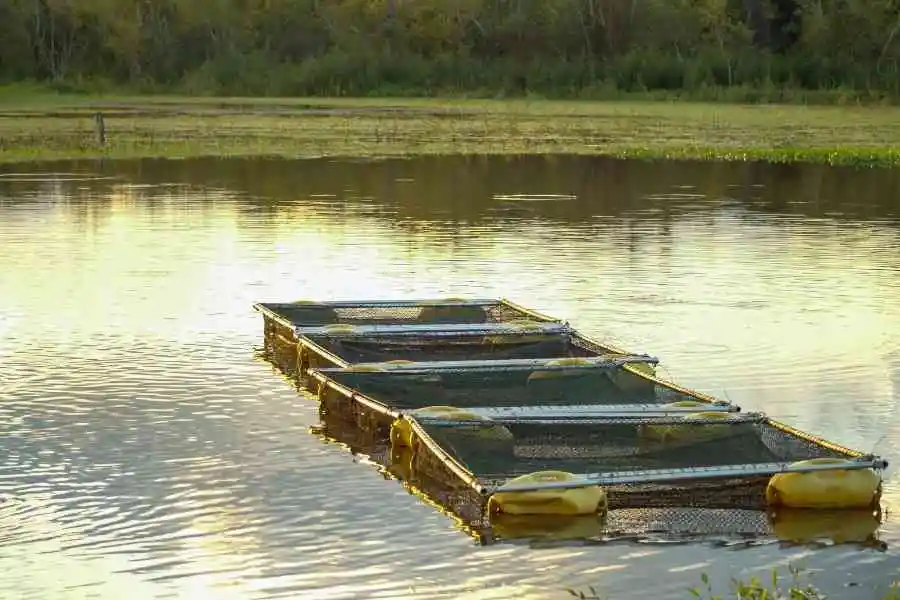Water quality in aquaculture is an important scientific tool for understanding the dynamics of the fish pond. Every organism needs a suitable place for living. Therefore, water should be suitable for improving fish to make aquaculture profitable.
Water quality in aquaculture

However, suppose the quality of water is not suitable. In that case, the following situation could occur, primary production, as well as natural feed for fish, will not be sufficient, the growth of fish will be slow, and much more supplementary feed will be required. Ultimately excess money will be spent, and finally, the fish production and net benefit will be found poor. Therefore, it is necessary to clearly understand the major water quality parameters affecting fish production in any aquaculture system.
The main physical properties of water are depth, light, temperature, turbidity, transparency, etc. Whereas the important chemical properties of water include dissolved oxygen, carbon dioxide, pH, alkalinity, ammonia-nitrogen, etc.
Depth:

The pond will be neither shallow nor very deep. The suitable water depth should be 1.5 – 2.0 meters for fish culture. During the summer season, the minimum depth should be 1.25 meters; during the rainy season, the maximum depth should not exceed 3 meters.
The depth of the nursery pond should be within 75 – 90 cm. 2.5 – 3.0 feet and the depth of the stocking pond should be 150 – 200 cm (5.0 – 7.0 feet). Natural food production is very low in a very deep pond. As a result, fish growth occurs slowly. The water of a very shallow pond becomes very hot in summer, forcing the fish into a stressed condition. The height of dyke should be 60 cm above the maximum water level. Thus the pond will be protected from the flood created by the sudden rainfall.
Light:
Light is one of the most important factors for producing natural primary production through the ecosystem. Large trees on the dike and turbid water reduce the light fall in pond water. Therefore, it is very much essential to ensure sufficient light and air for the fish pond. Sunlight also has a role in reducing harmful microorganisms in soil and water. There is a positive relationship between light and temperature.
Temperature:
Fish is a cold-blooded animals. Therefore, water temperature plays a very important role in regulating the activities of the cultured animal. The rate of chemical and biological reactions is said to double at every 10˚C increase in temperature. This means aquatic organisms will use twice as much dissolved oxygen, and chemical reactions will progress twice as fast at 30˚C as 20˚C. It indicates that the dissolved oxygen requirement of aquatic species is higher in warmer than in cooler water.
The optimum temperature is about 25 – 30˚C. Water temperature affects a multitude of important processes in aquaculture. Physiological processes in fish such as respiration rates, feeding, metabolism, growth, reproduction, and rates of detoxification and bioaccumulation are affected by temperature. To remove the rapid death of fish and to improve quality, morning or dawn is a better time to release fish fry in the pond. If sunlight penetrates the pond easily, the bottom temperature will be good for fish.
Turbidity:
Turbidity is a measurement of light penetration in water. Turbid conditions result from dissolved and suspended solids such as clay particles or microorganisms such as phytoplankton. Clay turbidity in waters can cause gill damage, a barrier to free movement, and make fish stressed.
Excess growth of plankton causes bloom in pond water and reduces DO content in two ways. For example, less or no DO production by photosynthesis and more use of existing DO content to decompose the plankton cell. Sometimes fish can die due to high turbidity. Lime can be added to counteract the effects of clay turbidity. Turbidity can be measured with the help of a Secchi disc, and appropriate management for aquaculture ponds can be taken based on the Secchi disk readings/indications (Boyd, 1998).
If water turbidity is found due to plankton and the Secchi depth is less than 20 cm (indicating turbidity), there is no need for feed and fertilizer application. However, immediate fertilizer application is required when the Secchi depth is more than 60 cm (indicating transparent/clear water, i.e., no plankton in the water). The desirable Secchi depth is 30 – 45 cm in the fish pond.
Dissolved oxygen:
Dissolved oxygen (DO) is a very basic requirement for aquaculture spaces. It is usually the first limiting factor to occur in pond aquaculture. Prolonged exposure to the stress of low oxygen concentration lowers the physiological resistance to disease and inhibits fish growth. Dissolved oxygen in the pond water comes from two sources. Most of it comes as a by-product of photosynthesis, and the other source is from the diffusion of atmospheric air.
The amount of dissolved oxygen in the pond water is affected by many factors, particularly water temperature, respiration, and the level of organic matter. During the daytime, more oxygen is produced through photosynthesis than is removed from the water by the respiration of animals.
At night, plants and animals continue to respire while oxygen is added to the water only from the atmosphere. In some instances, the respiratory demand under certain circumstances causes total oxygen depletion, especially at daybreak, causing anoxia in the cultured animals. The optimum level of DO for carp and shrimp is 5 to 8 mg/l. Catfish can tolerate low dissolved oxygen.
The cause of decreasing the amount of dissolved oxygen is –
- If the excess food deteriorates in pond water
- During the excess decomposition of huge organic matter in water bodies
- If the phytoplankton grows excessively and makes bloom
- If the temperature and salt concentration of water is increased
Effects of low dissolved oxygen are –
- Fish come to the surface and fight for survival
- Fish shows faster and abnormal swimming
- After death, the mouth of the fish is found opened
- Gas bubbles are found on the surface of pond water
Depletion of DO in the fish pond can be controlled by making agitation/movement in the pond water as an instant action applicable for sunny weather, not for cloudy weather) or by spraying water with a pump. It is wise to consider pond construction to allow a greater contact of water surface with atmospheric air. Avoiding the plantation of a large tree on a dike is also a proven technique to get sufficient water mixing and produce DO in pond water.
Carbon dioxide:
Carbon dioxide (CO2) is a natural component of surface waters. Diffusion from the atmosphere, fish respiration, and the biological oxidation of organic compounds are the major sources of carbon dioxide in surface waters.
Extraordinarily high levels of carbon dioxide are of concern in aquaculture. This can occur in source water taken from ground waters. In addition, surface water sources can have high levels of carbon dioxide when respiration occurs at high rates. Thus, if the source water is taken from surface water at night or in the summer when respiration is high, there may be a reason for concern. The suitable range of carbon dioxide in pond water range from 2 to 5 mg/l.
Due to high organic decomposition, carbon dioxide may increase to 20 mg/l. When carbon dioxide concentrations are too high, the blood CO2 levels of fish increase, subsequently impairing the ability of hemoglobin to carry oxygen and causing respiratory distress. It occurs even at high oxygen levels and becomes more severe at lower oxygen levels. Either calcium hydroxide, also known as slaked or hydrated lime, or sodium carbonate may be added to reduce high levels of carbon dioxide. However, calcium hydroxide is cheaper and more widely available.
pH:
The pH of water is its hydrogen ion concentration (H+). It is expressed as the negative logarithm of the hydrogen ion concentration. The pond water’s pH indicates its fertility or potential productivity. Water pH ranging from 6.5 to 8.5 is generally considered suitable for fish and shrimp production.
Water with low pH can be treated with lime to neutralize the acidity. The water with excessive alkalinity (pH values > 9.5) may also be harmful to shrimp growth and survival. In ponds that are excessively rich in phytoplankton, the pH of pond water usually exceeds 9.5 during the late afternoon. pH 4.0 is an acidic death point, Whereas pH 11.0 is an alkaline death point.
Effect of acidic water:
If pH is lower than 5, fish lose sodium and chloride from their body, acidic water affects the fish gill and excretes mucous from the body, and larvae and fry are affected easily by acidic water.
Effect of base water:
If pH is greater than 11, fish dies rapidly. Fish gill is fully spoiled by base water, the lens and cornea of the fish eye are spoiled, osmoregulation decreases, and breeding ability decreases. Low pH waters are often treated with lime. Alum can be used to treat high pH waters.
Alkalinity:
Alkalinity is a measurement of the acid-neutralizing capacity of water. If alkalinity is found lower than the expected range, water losses are buffering capacity, and primary productivity decreases. Total alkalinity is expressed in mg/l of equivalent calcium carbonate (CO3). Alkalinity in natural freshwater systems ranges from 5 to 500 mg/l. Phytoplankton production is low in the water, with less than 20 mg/l alkalinities. Water is found poorly buffered with less than 30mg/l. Desirable alkalinity should be within 40 – 200 mg/l.
Ammonia:
Ammonia is the initial product of the decomposition of nitrogenous organic wastes and respiration. Studies have shown that exposure to ammonia concentration of 0.45 mg NH3-N/l would reduce shrimp growth by 50% high ammonia, causing an increase in the ammonia concentration and pH in fish blood. This can cause gill damage, reduce the oxygen-carrying capacity of the blood, increase the oxygen demand of tissues, damage red blood cells and affect osmoregulation.
As a control measure, important options include using aeration to oxidize the ammonia to nitrate (nitrification) or adjusting the pH and using air stripping to volatilize the ammonia. In addition, it is wise to avoid feed and fertilizer application during an increase in ammonia concentration in pond water.
